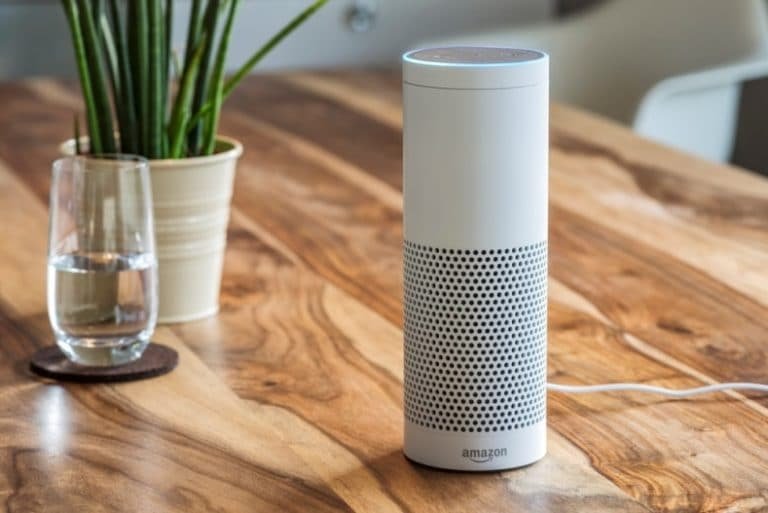How to Talk to Kids About EMF Safety
When discussing EMF safety with kids, explain that electromagnetic fields come from devices like phones and microwaves, and highlight their increased sensitivity due to thinner skulls and developing brains. Point out common sources at home, suggest keeping devices at arm’s length, and encourage tech-free zones and outdoor activities to balance screen time.
This understanding helps create a safer environment. Consider exploring additional strategies for awareness and protection.
Disclaimer: As an affiliate, I may collect a share of sales from the links on this page.
Understanding EMF: What Kids Need to Know

Every day, you interact with sources of electromagnetic fields, or EMFs. These fields arise from electric currents and can be categorized as electric or magnetic. Common sources include household appliances, laptops, and mobile phones. Smart home devices interconnected increase overall EMF emissions, which can further contribute to exposure.
EMFs are further classified into radiofrequency (RF) and extremely low-frequency (ELF) categories, based on their frequency. While ongoing research investigates potential health risks linked to long-term exposure, established safety measures recommend maintaining distance from EMF sources. At home, you can minimize exposure by altering device locations or limiting usage. Understanding these facts empowers you to make safer choices regarding EMF exposure in daily life.
Why Children Are More Vulnerable to EMF
While the effects of electromagnetic fields (EMFs) can impact everyone, children are particularly vulnerable due to several biological differences. Their developing brains are more sensitive to environmental influences, including EMF radiation. Thinner skulls allow greater RF radiation penetration, and higher brain tissue conductivity increases absorption rates. Compared to adults, children absorb more radiation in their bone marrow, receiving higher doses relative to their size. Their extended lifespan means cumulative exposure builds over time, increasing potential health risks. As technology usage rises at younger ages, ongoing research emphasizes the need for caution regarding EMF exposure’s long-term effects on children. Public awareness initiatives in Korea provide information on EMF but sometimes downplay carcinogenic concerns. This is crucial because the WHO classification of radiofrequency EMF highlights its potential risks to human health.
Recognizing Common Sources of EMF at Home

Recognizing the common sources of electromagnetic fields (EMFs) in your home is essential for understanding and managing exposure.
Common household appliances include microwaves, which produce high magnetic fields over 70 µT, and washing machines that emit around 30 µT. Long-term exposure to EMFs may benefit from resveratrol supplements, which may help mitigate potential effects.
You’ll find electric ovens and kettles generating magnetic fields exceeding 5 µT and 15 µT, respectively.
Televisions also contribute, with levels over 0.5 µT.
Electrical installations, like power lines and household wiring, can create low-frequency EMFs. Electric house installations are a significant source of EMFs in most homes.
Smart devices, cell phones, and Wi-Fi routers continuously emit EMFs, particularly when in close proximity, leading to increased overall exposure in your environment.
Simple Ways to Reduce EMF Exposure
Reducing EMF exposure at home can be achieved through simple modifications and mindful habits. Start by keeping devices at least an arm’s length away.
Turn off electronics when not in use. Consider wired connections for internet access, and make designated EMF-free zones, especially in bedrooms.
Use wired headphones to minimize emissions from phones. Set time limits on device usage and establish device-free times daily.
Additionally, make certain routers are placed away from common areas. Use shielding devices, such as Faraday cages, to block EMFs.
Regularly check devices for ideal placement and functionality to reduce exposure overall.
Engaging Educational Materials for Learning

Educational materials that engage students can play an essential role in teaching them about EMF safety. Utilizing interactive resources helps children understand exposure risks effectively.
Consider these options:
- Comprehensive curricula from Environmental Health Trust emphasize science-backed lessons.
- Wi-Fi in Schools Toolkit offers fact sheets and posters for easy reference.
- Group discussions foster dialogue on minimizing EMF exposure.
Incorporating visuals and hands-on activities makes lessons memorable, ensuring students grasp the implications of EMF exposure.
Implementing EMF Safety in Schools
When implementing EMF safety in schools, it’s essential to establish clear guidelines that effectively minimize exposure.
Schools should enforce policies like turning off wireless devices when not in use. Using wired connections decreases EMF exposure, making it a safer option.
Regular workshops educate staff and students on adhering to these guidelines. Encourage students to maintain a safe distance from devices and disable wireless functions when feasible.
Displaying safety information in classrooms constantly reinforces these practices.
Discussing Health Risks With Kids
Discussing health risks associated with electromagnetic fields (EMFs) is essential, especially in educational settings where children spend significant time.
To help kids grasp these concepts, you can:
- Simplify language, breaking down EMF definitions into basic terms.
- Focus on practical safety measures, like keeping distance from sources.
- Encourage kids to ask questions, fostering an open dialogue.
Addressing concerns about EMFs is crucial, as children’s bodies are still developing.
The World Health Organization suggests minimizing their exposure in environments they frequent.
Provide clear, factual information while balancing anxiety and awareness, ensuring kids understand both risks and safe practices.
Promoting Healthy Tech Habits
Promoting healthy tech habits is vital for safeguarding children’s overall well-being. Screen time management is important, as children aged 8-12 average 4-6 hours daily, while teens exceed 4 hours. Excessive use correlates with increased anxiety and depression.
Parents play an active role by setting boundaries, with 94% taking steps to manage their child’s tech use. Establishing tech-free zones promotes balance, preventing distractions from healthier activities like reading.
Educating kids on moderation guarantees they prioritize sleep and family time. Ultimately, fostering a culture of responsible tech use empowers children to engage in healthier digital practices and develop balanced habits.
Encouraging Outdoor Activities
Encouraging outdoor activities plays a significant role in promoting children’s overall health and development.
Regular engagement in nature provides numerous physical and mental benefits.
Children can:
- Enhance motor skills through activities like climbing and running.
- Improve their mood and reduce stress while exploring outdoors.
- Develop social skills by engaging in team sports or cooperative games.
Involving Parents and the Community in EMF Awareness
Involving parents and the community in EMF awareness is essential for fostering safer environments for children. Parents play a critical role by educating kids on safe device usage. Encourage discussions about EMF exposure and its potential impacts.
Schools should evaluate EMF levels and implement policies to reduce exposure. Community efforts, like local workshops, can raise awareness and promote EMF safety measures. Collaborating with neighbors can help identify local RF radiation sources.
Establishing device-free zones at home and supporting wired internet solutions in schools further mitigate risks. Through active participation, you can create a safer, more informed community regarding EMF safety.
Frequently Asked Questions
What Age Should Children Start Learning About EMF Safety?
Kids should start learning about EMF safety as early as preschool. Simple concepts can be introduced, gradually increasing complexity as they grow. It’s essential to reinforce these lessons consistently throughout their developmental stages.
Can EMF Exposure Affect Pets or Animals?
Yes, EMF exposure can affect pets and animals. Many studies show they can experience behavioral changes or stress from EMF, influencing their health and growth. It’s essential to monitor their environment for potential risks.
How Do I Measure EMF Levels at Home?
Think of your home as a garden; to nurture its health, you must measure EMF levels. Use certified meters in central areas, bedrooms, and workplaces, checking multiple times to reveal hidden electromagnetic habits thriving within.
Is There a Safe Level of EMF Exposure for Kids?
There’s no universally “safe” level of EMF exposure for kids. To protect them, limit their time around high-emission devices and encourage distance from electronics, which can help reduce potential risks associated with long-term exposure.
Can Using a Microwave Increase EMF Exposure Significantly?
Using a microwave is like standing too close to a sunbeam; it can greatly spike EMF exposure. However, by stepping back, you can reduce that exposure, keeping safety firmly in your grasp.
Conclusion
Educating kids about EMF safety is crucial for their health. Children absorb more radiation than adults due to thinner skulls and developing tissues. Recognizing EMF sources and implementing safety measures can significantly reduce exposure. Encouraging outdoor activities and involving parents in awareness programs further enhance these efforts. A proactive approach ensures kids use technology responsibly and healthily.






